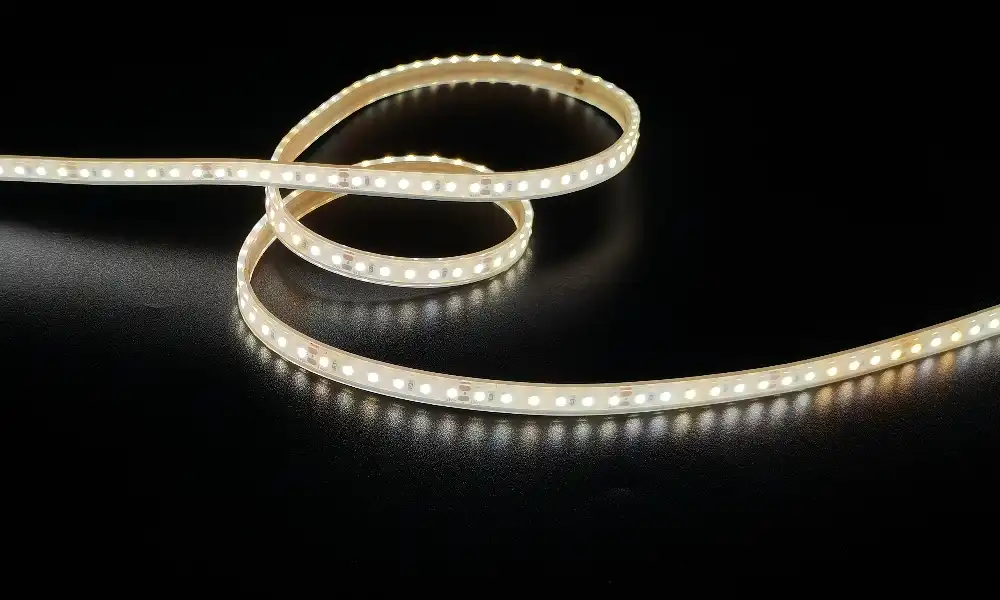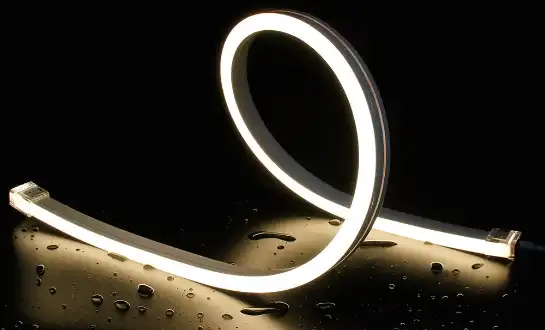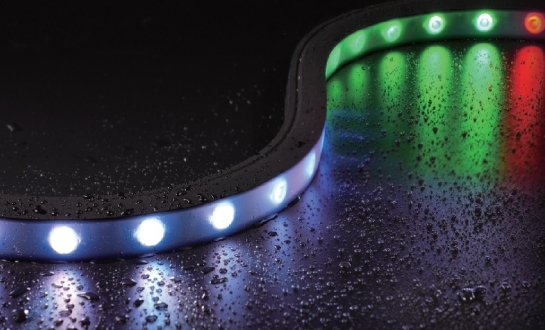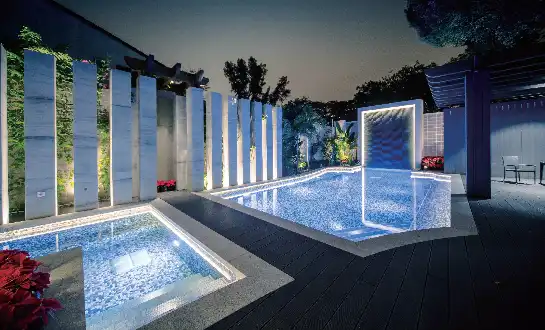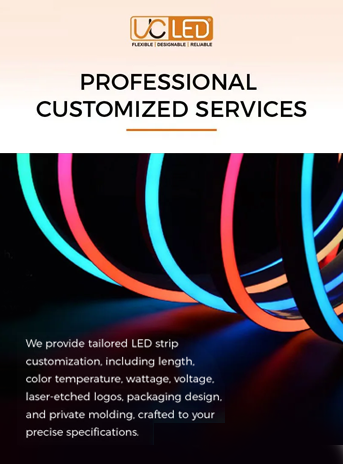Innovative DIY LED Strip Project Ideas
Illuminate Your Living Spaces
Transform your living areas with the magic of DIY LED strip lighting. Create a cozy ambiance in your bedroom by installing LED strips behind your headboard or under your bed frame. This simple addition can provide a soft, warm glow perfect for relaxation. In your living room, consider adding LED strips behind your TV or along bookshelves for a modern, high-tech look that reduces eye strain during movie nights.
For the kitchen, under-cabinet lighting using LED strips can dramatically improve visibility while cooking and add a touch of sophistication. Install strips along the kickboard of your kitchen island for a floating effect that will impress guests. In the bathroom, LED strips around mirrors or along the base of vanities can create a spa-like atmosphere, perfect for unwinding after a long day.

Outdoor Lighting Solutions
Extend your DIY LED Strip projects to outdoor spaces for stunning results. Line your deck or patio edges with waterproof LED strips to create a magical evening atmosphere. Illuminate pathways and steps for safety and style, or highlight landscape features like trees and water features for a professional-looking outdoor lighting design.
For a festive touch, wrap LED strips around outdoor columns or along fences to create a welcoming glow for gatherings. You can even use RGB LED strips to change colors for different seasons or holidays, adding a dynamic element to your outdoor decor.

Creative Accent Pieces
Let your imagination run wild with accent pieces using DIY LED strips. Create a stunning backlit wall art piece by mounting LED strips behind canvas prints or photographs. Design a unique coffee table by incorporating LED strips into the base or edges for a futuristic look.
For book lovers, transform your bookshelf into a work of art by adding LED strips to each shelf, highlighting your collection in a new light. In children's rooms, use LED strips to outline shapes or create constellations on the ceiling for a magical nighttime experience.
Essential Tips for Successful DIY LED Strip Projects
Planning and Preparation
Before diving into your DIY LED strip project, thorough planning is crucial. Measure the areas where you'll install the strips and calculate the length needed. Consider the power requirements and ensure you have an appropriate power supply. Sketch out your design and plan the route for any wiring to keep your installation neat and efficient.
Choose the right type of LED strip for your project. Consider factors such as color temperature, brightness, and whether you need RGB or single-color strips. For outdoor projects or areas exposed to moisture, opt for waterproof LED strips to ensure longevity and safety.
Installation Techniques
Proper installation is key to the success of your DIY LED Strips project. Clean the surface thoroughly before applying adhesive strips or mounting clips. For longer runs, use connectors to join strips seamlessly. When cutting LED strips, always cut along the designated lines to avoid damaging the circuitry.
Pay attention to heat dissipation, especially for high-power LED strips. If necessary, use aluminum channels or heat sinks to prevent overheating. For a professional finish, conceal power supplies and controllers in discreet locations, and use cable management techniques to hide wiring.
Customization and Control
Enhance your DIY LED strip projects with smart control options. Install dimmer switches or connect your LED strips to smart home systems for convenient control via smartphone apps or voice commands. For RGB strips, explore color-changing controllers that allow you to create custom scenes and effects.
Consider adding motion sensors to automate lighting in areas like closets or under-cabinet spaces. This not only adds convenience but can also contribute to energy savings. For outdoor installations, light sensors can automatically activate your LED strips at dusk and turn them off at dawn.
Troubleshooting Common DIY LED Strip Issues
Addressing Power Problems
One of the most common issues in DIY LED Strip projects is inadequate power supply. If your strips appear dim or flicker, it's likely due to insufficient power. Ensure your power supply matches the voltage requirements of your LED strips and can handle the total wattage of your installation. For longer runs, consider using multiple power injection points to maintain consistent brightness.
If certain sections of your LED strip are not lighting up, check for loose connections or damaged sections. Resecure any loose wires and replace any damaged portions of the strip. Remember to always disconnect the power before making any repairs or adjustments.
Resolving Color and Brightness Inconsistencies
For RGB LED strips, color inconsistencies can sometimes occur due to voltage drop over long distances. To mitigate this, use a controller with amplifiers for each color channel or install multiple controllers for different sections of your installation. If you notice brightness variations along the strip, it could be due to voltage drop as well. Consider using thicker gauge wires or adding power injection points to maintain consistent brightness.
In some cases, color inconsistencies may be due to manufacturing variations between different batches of LED strips. To avoid this, purchase all the strips for your project from the same batch if possible, or test your strips before installation to ensure color consistency.
Waterproofing and Environmental Protection
For outdoor or moisture-prone areas, proper waterproofing is essential. If you notice water ingress or corrosion on your LED strips, it's crucial to address the issue promptly. Check that all connections are properly sealed with silicone or heat shrink tubing. For added protection, consider using IP67 or IP68 rated strips and housings for outdoor installations.
In environments with extreme temperatures, be aware that LED performance can be affected. Very high temperatures can reduce the lifespan of your LED strips, while very low temperatures might affect color output, especially for RGB strips. Use appropriate heat sinks or cooling solutions in hot environments, and choose LED strips rated for low-temperature operation in cold climates. Conclusion
Embarking on DIY LED Strip projects opens up a world of creative possibilities for enhancing your living spaces. With the right planning, techniques, and troubleshooting knowledge, you can achieve professional-looking results that transform your environment. As you explore the potential of LED strip lighting, remember that quality matters. Choosing a reputable LED strip supplier or manufacturer ensures you're working with durable, efficient products that will bring your creative visions to life. Whether you're illuminating your home, office, or outdoor spaces, the versatility of LED strips allows for endless customization and innovation.
FAQ
What tools do I need for DIY LED strip projects?
Essential tools include wire strippers, a soldering iron, scissors or a sharp utility knife, and a multimeter. Depending on your project, you might also need a drill, screwdriver, and mounting clips or channels.
Can I connect different types of LED strips together?
It's generally not recommended to connect different types of LED strips directly. Ensure you're using strips with the same voltage and specifications. If necessary, use separate power supplies and controllers for different strip types.
How long do LED strips typically last?
High-quality LED strips can last up to 50,000 hours or more when properly installed and maintained. This equates to over 5 years of continuous use or much longer with normal usage patterns.
Illuminating Innovations: Your Trusted Partner for DIY LED Strip Projects | QUAN HE
At QUAN HE, we're passionate about bringing your creative lighting visions to life. As a leading manufacturer of premium linear lighting products, we offer high-quality, flexible LED strip solutions perfect for your DIY projects. Our expert R&D team and ISO-certified manufacturing facility ensure you receive innovative, reliable products that meet the highest industry standards. Whether you're a DIY enthusiast or a professional installer, trust QUAN HE to illuminate your world with precision and excellence. For customized solutions and expert advice, contact us at Linda@uc-led.com.

References
1. Smith, J. (2022). The DIY LED Lighting Revolution: Creative Projects for Home and Office. Illumination Press.
2. Johnson, A. (2023). Energy-Efficient Lighting Solutions: A Guide to LED Strip Applications. Green Tech Publications.
3. Brown, M. (2021). The Art of LED Lighting Design: From Concept to Installation. Creative Spaces Publishing.
4. Lee, S. (2023). Smart Home Lighting: Integrating LED Strips with IoT Technologies. Future Home Press.
5. Wilson, R. (2022). Outdoor Lighting Innovations: LED Strips in Landscape Design. Garden Illumination Books.
